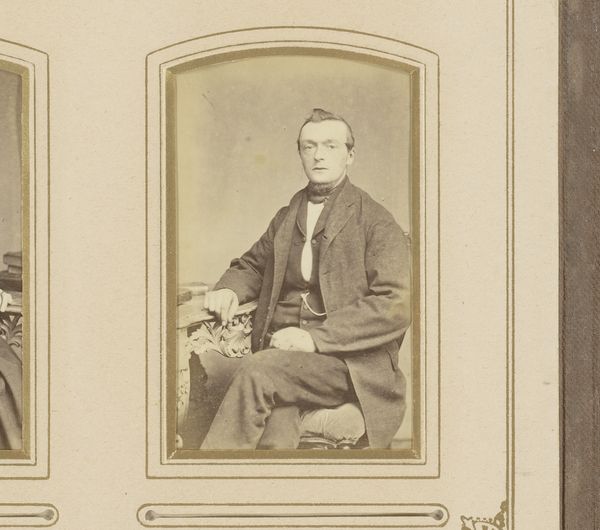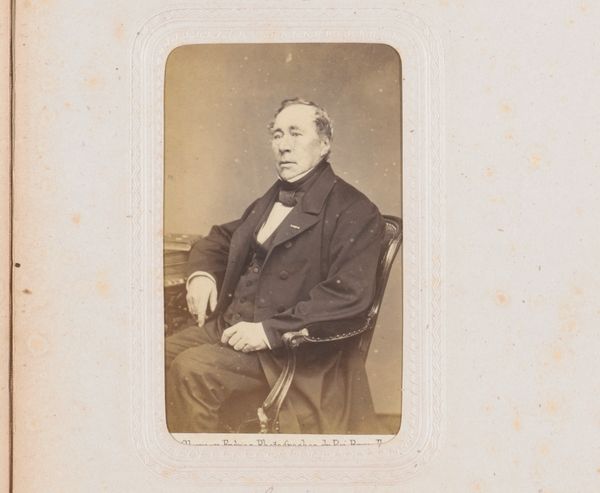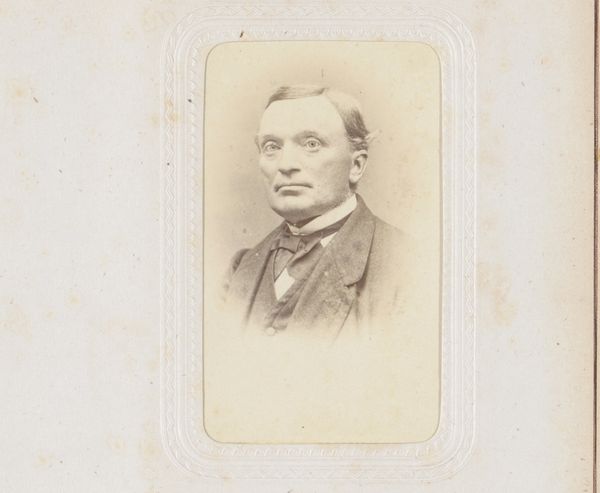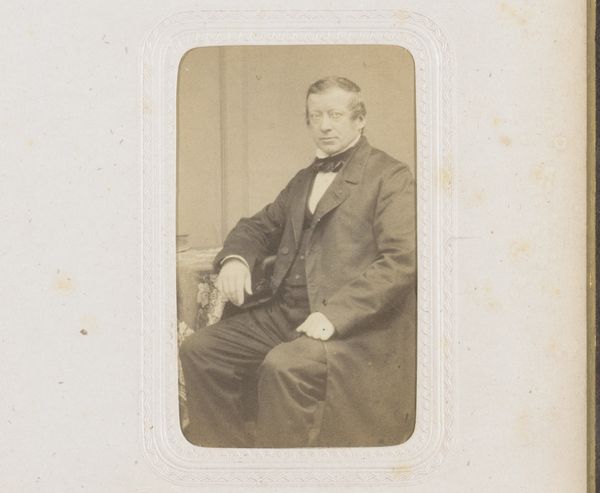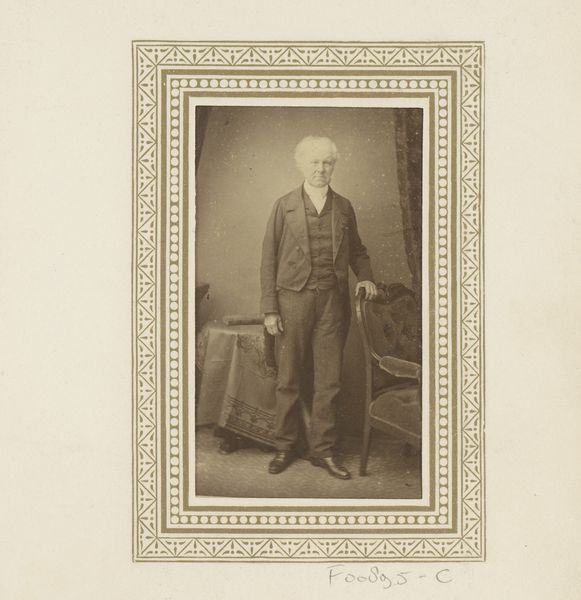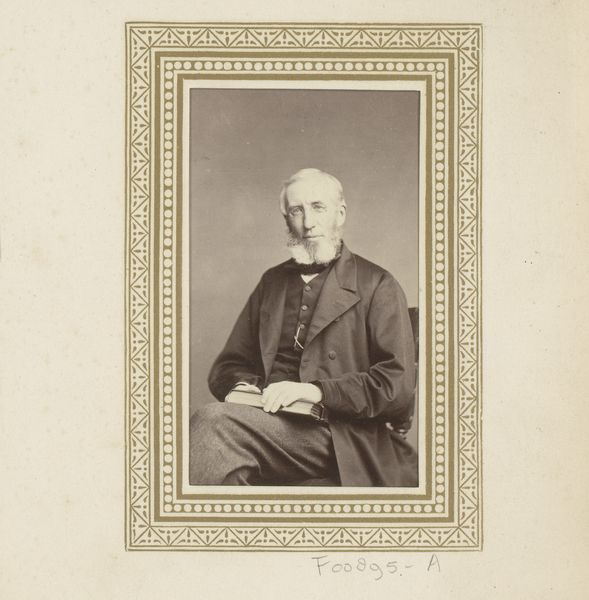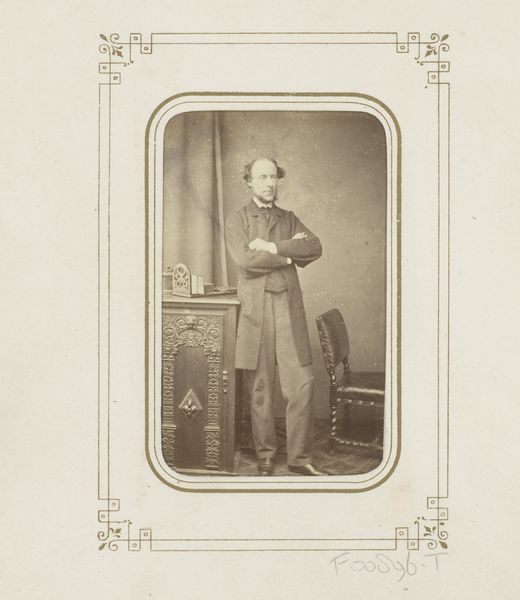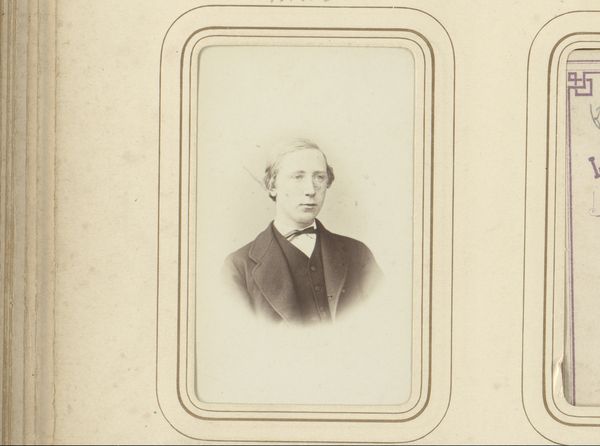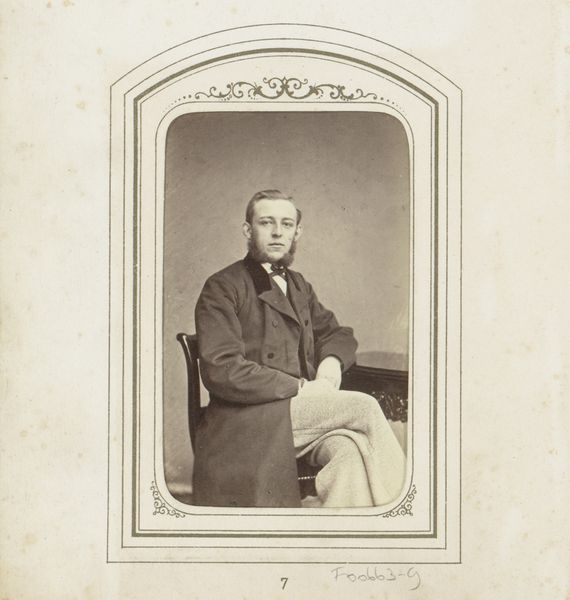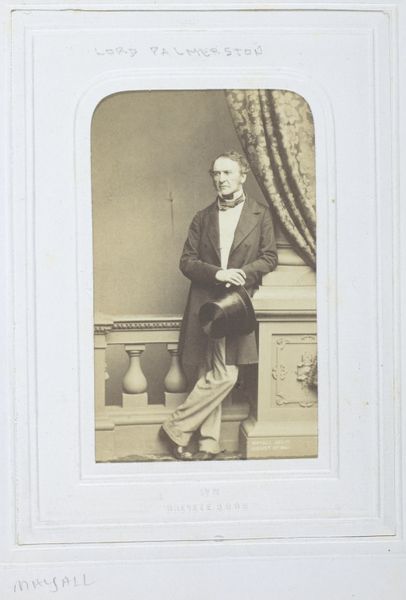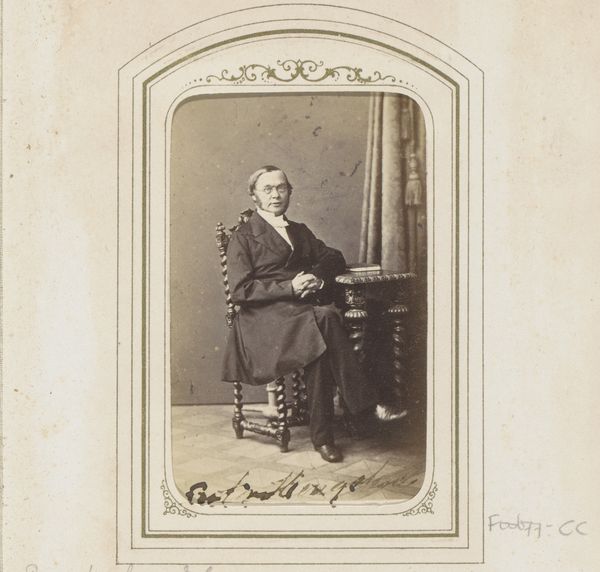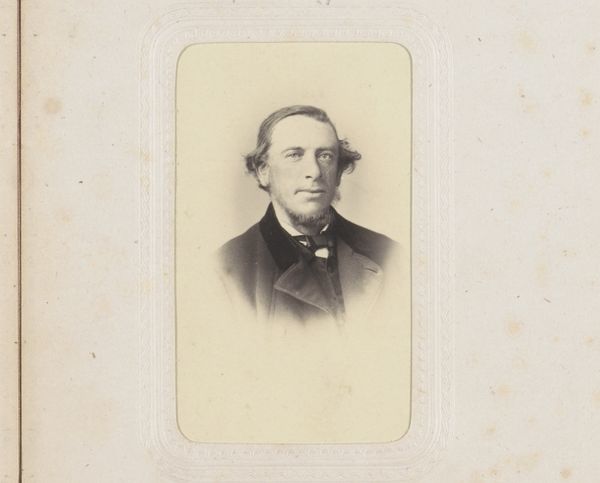
photography, gelatin-silver-print
#
portrait
#
book
#
photography
#
historical photography
#
gelatin-silver-print
#
genre-painting
Dimensions: height 101 mm, width 62 mm
Copyright: Rijks Museum: Open Domain
Curator: Here we have "Portret van een zittende man met een boek in de hand" - Portrait of a seated man with a book in his hand - a gelatin silver print produced between 1863 and 1875 by G. and R. Lavis. Editor: It feels very staged. Rigid, almost. The framing enhances the formal quality, making it appear rather austere and reserved. Curator: The portrait is undoubtedly formal. Yet, it captures a transitional moment in the medium, situated between painted portraits and the rise of more candid photography. The sitter, presumably a man of status given his attire, consciously participates in the making of his own image. How might that power dynamic reflect broader social structures of the era? Editor: Absolutely. Look at the positioning of the book. It serves as a symbolic marker of intellect and authority. The subject almost uses the book like a prop. The overall composure – the way he rests his hand, the slight angle of his gaze – it all contributes to the construction of a particular self-image, reflecting the era’s values around masculinity, education, and status. Curator: And those values are deeply rooted in societal structures that perpetuated certain privileges, especially in terms of access to education and power. Consider who was and wasn’t able to be represented in this way during that period. Editor: That's very important. There’s also the cultural weight the book holds here. What meaning can be derived by depicting an affluent, seated gentleman with a book, knowing that images shape and uphold norms and values across time? Curator: Right. It's also interesting how portraiture itself reinforces a cultural emphasis on individual achievement. This kind of imagery played a role in cultivating specific aspirations and norms, but often at the exclusion of many. Editor: Definitely. It provokes thoughts on how we choose to present ourselves even today. There is the legacy of symbolism in how people display objects as part of their constructed image. Curator: Considering it, it truly demonstrates the complexities embedded in seemingly simple portraits. Editor: Indeed, much to reflect on, especially thinking of how symbols change meaning across time and social contexts.
Comments
No comments
Be the first to comment and join the conversation on the ultimate creative platform.
